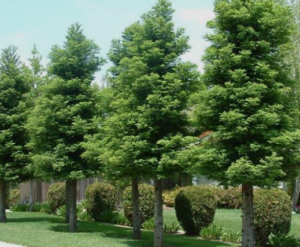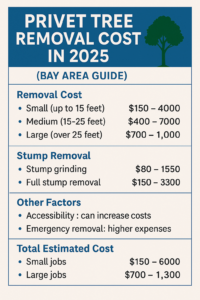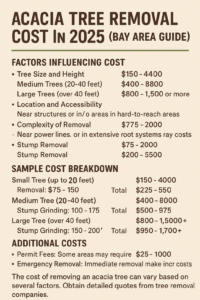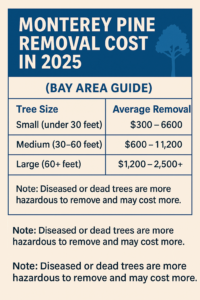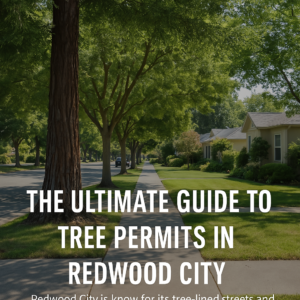From heavy winter storms to drought-weakened roots, the Bay Area is no stranger to falling trees. Whether it’s an ancient oak in Los Gatos or a redwood near Redwood City, a fallen tree on your property can be both dangerous and overwhelming. Here’s a step-by-step guide to help you stay safe, minimize damage, and handle the situation with confidence.
First, Stay Safe
Assess Immediate Danger
The first priority is always safety. If a tree has come down, take a moment to assess the situation—from a distance.
- Are there downed power lines? If so, do not approach. Live wires can be deadly.
- Are people or pets injured? Attend to any injuries and call emergency services right away.
- Is your home, car, or structure unstable? If the tree has crushed part of your property, there may be risk of collapse or further damage.
Leave the Area if Needed
If there’s any doubt about your safety, evacuate. Avoid walking under hanging branches or near any part of the fallen tree that still has tension in it. Even if the tree looks stable, root systems and limbs can shift unexpectedly, especially after rain or high winds.
Call the Right People
Emergency Services (If Needed)
If the situation involves injuries, live electrical wires, or blocked public roadways, don’t hesitate—call 911. They’ll coordinate with local utility companies like PG&E to secure the area and make it safe.
You can also call PG&E directly to report a power line issue at 1-800-743-5000.
Contact a Certified Tree Removal Service

Once the immediate danger has passed, it’s time to get the professionals involved. Look for a 24/7 emergency tree removal service—especially one that serves the Bay Area and can get to you quickly.
Firefighter Tree Service, for example, specializes in emergency response and works with insurance companies to streamline the claims process.
Pro tip: Ask if they have ISA Certified Arborists on staff—many insurers prefer or require arborist reports when processing claims.
Notify Your Insurance Provider
As soon as you’re safe and have contacted a tree professional, get in touch with your homeowner’s insurance company.
They’ll guide you through next steps, such as:
- Whether an adjuster will visit
- What documents you’ll need
- Coverage for both removal and property damage
Some policies cover tree removal only if the tree caused damage to a structure, so be sure to ask.
Document the Damage
Take Clear Photos from Multiple Angles

Before the tree is moved, take photos of everything:
- The tree itself
- Damage to your house, fences, cars, or landscaping
- Nearby areas that might be impacted (e.g. leaning trees or root upheaval)
Include both wide shots and close-ups. These will be invaluable for insurance claims and working with contractors.
Keep a Record of All Communication
Create a digital or physical folder for:
- Emails, texts, and voicemails related to the incident
- Receipts for tree removal, emergency services, or repairs
- Names and contact info for any contractors or service providers you speak with
This paper trail can make a big difference when navigating insurance or potential disputes.
Understand Who’s Responsible
If the Tree Was on Your Property
In most cases, if a tree from your property falls and damages your home, car, or other structures, your homeowner’s insurance will cover it, assuming it fell due to natural causes like wind or storms. You’ll likely be responsible for paying the deductible, but the policy should cover removal of the tree (if it caused damage), repairs to the structure, and sometimes even debris cleanup.
However, if the tree didn’t cause any damage—say it just fell in the yard—removal costs may not be covered. Always confirm the details with your insurer.
If the Tree Was on a Neighbor’s Property
This is where things can get tricky. If your neighbor’s tree falls on your property:
- Your own insurance typically covers the damage.
- You can’t hold the neighbor liable unless there was prior negligence—for example, if they knew the tree was diseased or unstable and failed to act.
In the Bay Area, many cities—including Redwood City, Palo Alto, and Los Gatos—also have ordinances about shared tree responsibility and fence-line trees, so you may need to consult with your city or an arborist for clarity.
Prevent Future Tree Hazards
Schedule Routine Inspections
One of the best ways to avoid future disasters is through regular tree inspections. Certified arborists can:
- Identify signs of disease or decay
- Check for structural weaknesses like split trunks or hollow limbs
- Recommend proactive pruning or bracing
In storm-prone months (especially winter), inspections are a smart investment.
Know the Signs of a Risky Tree
Many trees give early warning signs before falling:
- Leaning trunks, especially after heavy rain
- Cracked or dead limbs near the canopy
- Fungus or mushrooms at the base (sign of internal decay)
- Soil mounding or exposed roots on one side
If you notice any of these, don’t wait—get a professional evaluation. Prevention is always cheaper than emergency removal and repairs.
Why Professional Help Matters
Safety and Liability

DIY tree removal may sound tempting, but it’s dangerous and often illegal if the tree is near power lines or requires a permit. Certified professionals:
- Use specialized equipment
- Are trained in hazardous removals
- Carry liability insurance—so you’re protected if something goes wrong
This is especially important in cities with strict urban forestry codes, like San Mateo or Mountain View, where improper tree removal can result in fines.
Faster Insurance Claims
Many insurance companies prefer working with certified professionals because they:
- Provide formal arborist reports detailing why the tree failed
- Can supply detailed documentation with photos and written evaluations
- Often help you file the claim directly
Using a trusted tree removal service can mean faster reimbursement and fewer headaches during the process.
When a tree falls on your property in the Bay Area, it’s more than just a mess—it’s a safety issue, a financial concern, and often an emotional shock. But by staying calm, acting quickly, and knowing who to call, you can navigate the situation smoothly.
Remember:
- Your safety comes first—never approach downed power lines or unstable trees.
- Call emergency services and a certified tree removal company as soon as possible.
- Document everything for insurance, and don’t be afraid to ask for help with the claims process.
- Finally, invest in preventative care—regular inspections and pruning can stop the next tree from falling.
At Firefighter Tree Service, we’ve helped thousands of Bay Area homeowners respond to fallen trees quickly, safely, and professionally. Whether it’s an emergency removal or just a question about your property, we’re here when you need us—day or night.

